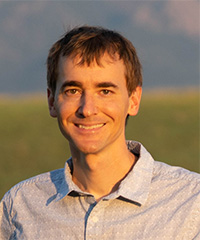David Leibrandt - Physics
Colloquia Topic and Speaker Bio

Abstract: The extreme precision and accuracy of state-of-the-art optical atomic clocks can be used to look for very small deviations from the predictions of the Standard Model, offering a tool to search for beyond Standard Model (BSM) physics complementary to particle accelerators. These searches are based on measuring the frequency ratio of two transitions that depend differently on interactions with BSM particles or fields. In this talk, I will begin with a brief review of optical atomic clocks, focusing on clocks based on quantum-logic spectroscopy of Al+. I will proceed to present a frequency ratio measurement between Al+ and Yb clocks at NIST that used a new coherent clock comparison protocol called differential spectroscopy in order to achieve the highest precision of any interspecies ratio measurement to date. I will conclude with a discussion of two new experiments being set up at UCLA aimed at performing precision quantum-logic spectroscopy of transitions with much higher sensitivity to BSM physics in a variety of sectors. In the first, precision measurements of the 149 nm nuclear isomer transition in sympathetically laser cooled 229Th3+ ions will be used to search for proposed ultralight scalar dark matter models such as the relaxion and for time-variation of the fundamental constants predicted by theories that seek to unify general relativity with quantum mechanics. In the second, quantum control and quantum-logic spectroscopy of polyatomic molecules will be used to study and search for fundamental symmetry violations in the weak and strong force sectors.
Bio: David Leibrandt is a Professor in the Department of Physics & Astronomy at UCLA. Before moving to UCLA in 2022, he was an Associate Professor Adjoint at the University of Colorado and led the trapped-ion optical atomic clock and precision measurement experiments within the Ion Storage Group at the National Institute of Standards and Technology in Boulder, CO. He received his Ph.D. in Physics from the Massachusetts Institute of Technology (MIT) in 2009 and his B.S.E. in Engineering Physics from the University of Michigan in 2004. David is a Fellow of the American Physical Society and a recipient of the EFTF Young Scientist Award and the Department of Commerce Gold Medal Award for the development of optical atomic clocks based on quantum-logic spectroscopy of aluminum ions with record fractional inaccuracy below 10^-18.
